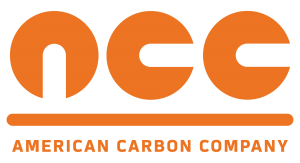Electrolysis in general covers the complete product line of anodes that American Carbon produces. Even Cathodic Protection anodes are undergoing the process of electrolysis to be effective. In this case however we will focus on a number of key industries that all use anodes in the same way. These are surface finishing, electrowinning (or precious metal recovery) and water treatment.
Surface finishing has traditionally been dominated by hexavalent chrome coatings. This tested but dirty process uses anodes made of carbon or graphite, zinc or even lead, our BADGERCOMP and BADGERCUSTOM anodes lines have been serving these industries for years. BADGERCOAT Mixed Metal Oxide Anodes are a great resource to start with. All signs point to the hexavalent chrome industry slowly going away – in fact it is already limited or near non-existent in Europe. The future is trivalent chrome process while still not perfect is a better alternative for the environment. For trivalent chrome applications, including raw titanium anode baskets, look at BADGERCHROME Anodes.
Electrowinning is a process used to recover metal from a solution using an electrically charged cathode. The metal ions in the solution are attracted to the cathode where they are reduced and deposited as metal. The anode acts as a source of metal ions and is typically made of a material that is corroded to produce metal ions. A direct current is applied between the cathode and anode, creating an electrolytic cell. The metal ions are transferred from the anode to the cathode, where they are reduced and deposited as metal. The process of electrowinning is commonly used in the mining and refining industry to recover metals such as copper, gold, silver, and zinc from their respective solutions. The efficiency and effectiveness of the electrowinning process depend on several factors, including the concentration of metal ions in the solution, the current density, and the temperature of the solution.
Water treatment and electrolysis is basically hypochlorite production or the process of synthesizing hypochlorite compounds, which are chemical substances that contain chlorine and oxygen. Sodium hypochlorite is one of the most common forms of hypochlorite and is widely used as a bleach and sanitizer. Hypochlorite production typically involves the electrolysis of saltwater, in which an electric current is passed through the solution to produce chlorine gas at the anode. The chlorine gas can then be reacted with a strong base, such as sodium hydroxide, to produce sodium hypochlorite. The process can be optimized to produce a specific form of hypochlorite, such as calcium hypochlorite, by adjusting the conditions of the electrolysis and the reaction with the base.
















